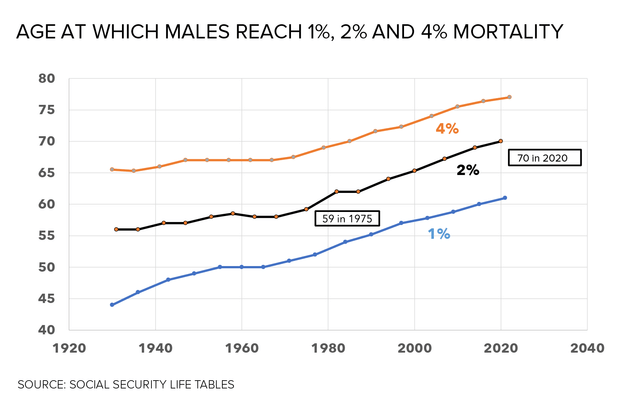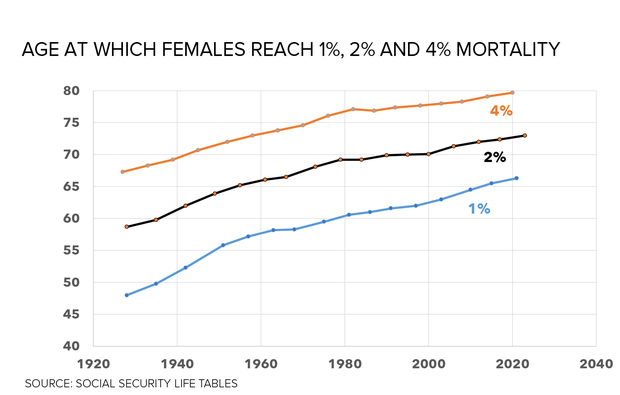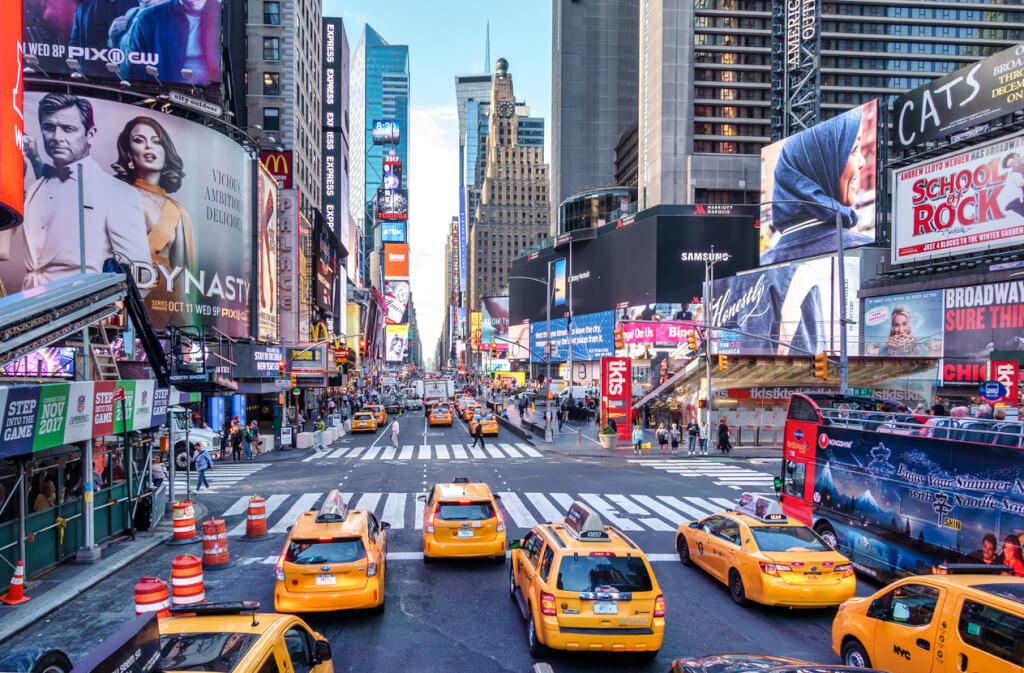Old people are getting older: how the perception of age has changed in the US
'01.06.2022'
Nadezhda Verbitskaya
Old people are getting older. A statistical perspective provides an interesting insight into living and working in today's longevity revolution. CBS News.
A study by John Chauvin, a renowned professor of economics at Stanford University, suggests that if your chance of dying within the next year is 1% or less, you can be considered middle-aged. The chart below shows that the threshold for men above middle age has increased from about 44 in the 1920s to about 60 today.

If your chance of dying within the next year is 2% or more, you can be considered old. The threshold age for being considered old for men has increased from about 55 in the 1920s to 70 today.
If your chance of dying within the next year is 4% or higher, you may be considered very old or elderly. This threshold for men has increased from about 65 in the 1920s to 76 today.
An elderly person in the 1920s (55 years old) today belongs to the category of middle age, and a very old person in the 1920s (65 years old) is now just old
Chauvin suggests that a decrease in mortality is roughly correlated with an improvement in health and vitality at any age, and can be used as a proxy for aging.
Here is the same table for women:

In this regard, middle-aged women today become 65 years old, while in the 1920s they were 40 years old. Old age for women today comes at about 73 years old, and in the 1920s they were considered old at 50 years old. Accordingly, a very old woman today is considered to be at 80 years old instead of 67 in the 1920s.
But these are just numbers. How do today's older generation look and feel? It is interesting to compare photos of parents and grandparents when they were 60-70 years old. They look much older than today's people of the same age.
These are the happy consequences of the longevity revolution that we have been experiencing over the past few decades. This is the result of access to clean water, sanitation, waste disposal, electricity, refrigerators and vaccinations, as well as continuous improvement in health care. Many demographers predict that life expectancy will continue to increase in the future.
We would love to live longer and healthier lives, but we are wringing our hands at the serious problems of an aging society.
The above data points to the need for people to continue working in later years. But as a society, we set cultural expectations about retirement age decades ago, when many people in their 60s and 70s couldn't work and were considered old.
It's too expensive to keep adding more and more years to our retirement years. This requires a level of savings that we cannot afford, and puts a serious strain on social security and pension systems.
On the subject: Answers to 10 important questions about retirement in America
Chauvin says it's very expensive to finance a 30-year retirement plan in 40 career years. This points to the economic need for many people to work longer than previous generations. It doesn't make sense to stop working completely at 60 or 70. We are no longer considered old at this age and are still physically able to earn. In addition, people who work at an older age can receive social and medical benefits.
Society faces significant challenges in adjusting to more people living longer. However, it is better to face these problems than to go back to those ancient times when the old people were much younger than they are today.







